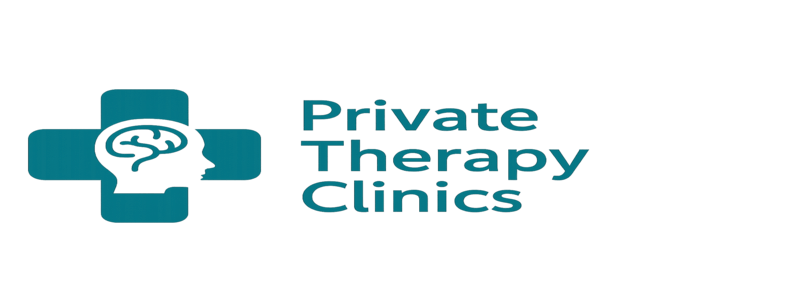
The goal of talk therapy is to teach patients how to speak and listen again, not just to heal their minds. Conversation has become a lost art in a time of short texts, fast responses, and endless scrolling. On the other hand, people are rediscovering how to communicate in therapy rooms under the guidance of presence and patience. This quiet rediscovery could be one of the most human revolutions of our time.
Therapists foster a unique environment where communication slows down, silence has purpose, and connection feels real through soft conversation. Often underappreciated, this area is incredibly powerful at retraining people’s interactions. It restores the fundamental ability of authentic communication in addition to healing emotional scars.
| Aspect | Information |
|---|---|
| Topic | How Talk Therapy Restores the Lost Skill of Real Conversation |
| Core Concept | Examines how talk therapy reawakens the vanishing art of meaningful conversation — rebuilding empathy, emotional awareness, and the rhythm of genuine human connection. |
| Key Focus Areas | Active listening, emotional literacy, nonverbal communication, repairing conversational ruptures, rebuilding interpersonal trust. |
| Cultural Context | Reflects the modern communication deficit caused by digital distraction, with therapy emerging as a practical remedy for emotional isolation. |
| Reference | https://www.apa.org/monitor/2023/11/conversations-key-to-wellbeing |
“The bridge that carries understanding” is how PositivePsychology.com’s Dr. Jeremy Sutton characterizes communication in therapy. Every conversation between the client and the therapist turns into a teaching moment about timing, emotional rhythm, and clarity. Clients learn what it’s like to be truly heard through this constant back and forth, which includes pauses, paraphrasing, and thoughtful questioning. Additionally, you naturally begin to listen better after you’ve been heard.
The American Psychological Association’s psychologists have discovered that people frequently underestimate the benefits of having in-depth conversations. They anticipate discomfort or exhaustion, but instead they experience warmth and contentment. In many respects, talk therapy serves as an organized reminder of that reality: connection flourishes when we cease performing and begin to participate.
Therapy clients often start off with brief, evasive responses. Many have shaped themselves into soundbites by carefully selecting every word on the internet over the course of years. However, as sessions progress, the freedom of speech increases. Honesty replaces hesitation. The therapist, who has been trained to listen without interjecting or passing judgment, exemplifies a very transparent communication style that is kind, purposeful, and humanizing.
Therapy, according to Dr. Paul Wachtel, is about “listening people into speech.” The therapist takes on the roles of conductor and accompanist, directing the rhythm until the client finds their own tempo. This process is remarkably similar to teaching music. Clients eventually observe that they are asking better questions, waiting longer before responding, and listening with genuine curiosity as a result of this rhythm being carried over into regular conversations.
This change is not a coincidence. Certain communication techniques that are very effective at enhancing comprehension are used in talk therapy. Building rapport involves a combination of validating statements, empathic reflection, and active listening. When a therapist says, “It sounds like you felt overlooked,” for instance, it’s not a guess; rather, it’s an invitation to clearly and safely explore emotion. Emotional literacy, a skill that has been significantly eroded in fast-paced, digital interactions, is developed through the simple act of naming feelings, according to psychologists.
“Talking out loud helps clients hear themselves in ways they never have before,” says Dr. Reshawna Chapple, a therapist with Talkspace. For people who have been silenced by habit, anxiety, or shame, it is especially helpful. People begin to organize their emotions, recognize patterns, and regain coherence when they speak out loud. They transition from feeling overpowered to being understood by themselves and their therapist.
Naturally, the irony is that despite having access to a wealth of communication tools, we have never felt more alone. Platforms exchange messages, but translation frequently distorts their meaning. On the other hand, therapy brings communication back to its most basic form: one voice speaking to another. It emphasizes presence, tone, and nuance—all the nuances that contribute to genuine speech.
Conversation is “an ancient technology for aligning minds,” according to Dartmouth University neuroscientist Thalia Wheatley. According to her research, two people’s brain activity literally synchronizes during genuine conversation. The ability of talk therapy to physically re-attune people to the act of being present is its hidden power. That synchronization feels revolutionary in an age of fragmented attention.
Therapy is frequently described by clients as a place where time passes differently. There is no pressure to answer quickly or to be correct. Silence, which is frequently awkward in everyday speech, can be a tool for introspection. This is referred to as the “therapeutic pause” by therapists. Clients frequently provide their most insightful comments there. Conversation reverts to its original purpose in that silence: mutual discovery rather than mutual diversion.
Well-known people like Lady Gaga and Prince Harry have publicly acknowledged that therapy has helped them reestablish their emotional and communication connections. “Therapy taught me how to listen to myself before I speak to anyone else,” Gaga once remarked. This straightforward yet profound idea reflects what psychologists consistently observe: therapy improves conversational skills by first restoring the ability to have internal dialogue.
Listening, articulating, and validating are all conversational skills that therapy teaches that are applicable outside of clinical settings. Teams under the direction of managers who have received therapeutic communication training exhibit noticeably higher levels of morale and collaboration in the workplace. Because they learn to substitute reflective responses for defensive ones, couples who participate in joint therapy report much lower conflict escalation in their relationships. These outcomes demonstrate that therapy reconditions communities in addition to helping individuals.
Curiously, pop culture is also being impacted by this resurgence of in-depth discussion. The structure of long-form interview podcasts, such as Armchair Expert and On Purpose, is heavily influenced by therapeutic discourse. The unhurried pace, the slow unpacking of ideas, and the serene cadence—all characteristics that contemporary conversation has lost—are what captivate listeners. Therapy is teaching society how to communicate again, whether directly or indirectly.
A subtle but important role is also played by nonverbal communication, which is frequently disregarded outside of therapy. Attention and empathy are conveyed by a therapist’s posture, nod, or lowered gaze. These cues are very effective because they remind clients that physical communication is just as important as verbal communication. Clients’ body language outside of therapy changes as they internalize this; they begin to speak in a congruent manner, maintain eye contact, and fully face others.
This slow change is referred to by therapists as “conversational rehabilitation.” It involves reestablishing a connection following years of emotional neglect. Talk therapy helps patients regain their emotional agility by allowing them to freely transition between speaking and listening, between vulnerability and poise, much like physical therapy does.
A new appreciation for dialogue as a therapeutic tool is the result of this cultural awakening. Communication is an exchange of dignity, not just information. That fact is reaffirmed in every therapy session. The therapist teaches that being present is an act of care by listening intently. The client learns that words can do more good than harm when they are used appropriately by receiving thoughtful responses.
Deeper conversations are consistently associated with higher levels of life satisfaction, according to research by psychologists like Juliana Schroeder and Michael Kardas. According to their research, fulfillment is determined by connection rather than content. That is exactly what talk therapy serves as a training ground for; it teaches you how to stay, not what to say.
Talk therapy is essentially our contemporary remedy for the decline of conversation. It substitutes depth for disconnection, nuance for noise, and reflection for reaction. The forgotten rhythm of talking, listening, pausing, and comprehending is gently reintroduced. And that could be the most significant recovery of all for a culture that is overflowing with conversation but lacking in interpersonal relationships.
Talk therapy quietly rewires how we relate to one another by reestablishing conversation, which does more than just heal individuals. It serves as a reminder that deliberate conversation is still one of the most powerful means of fostering empathy, understanding, and a sense of humanity.

